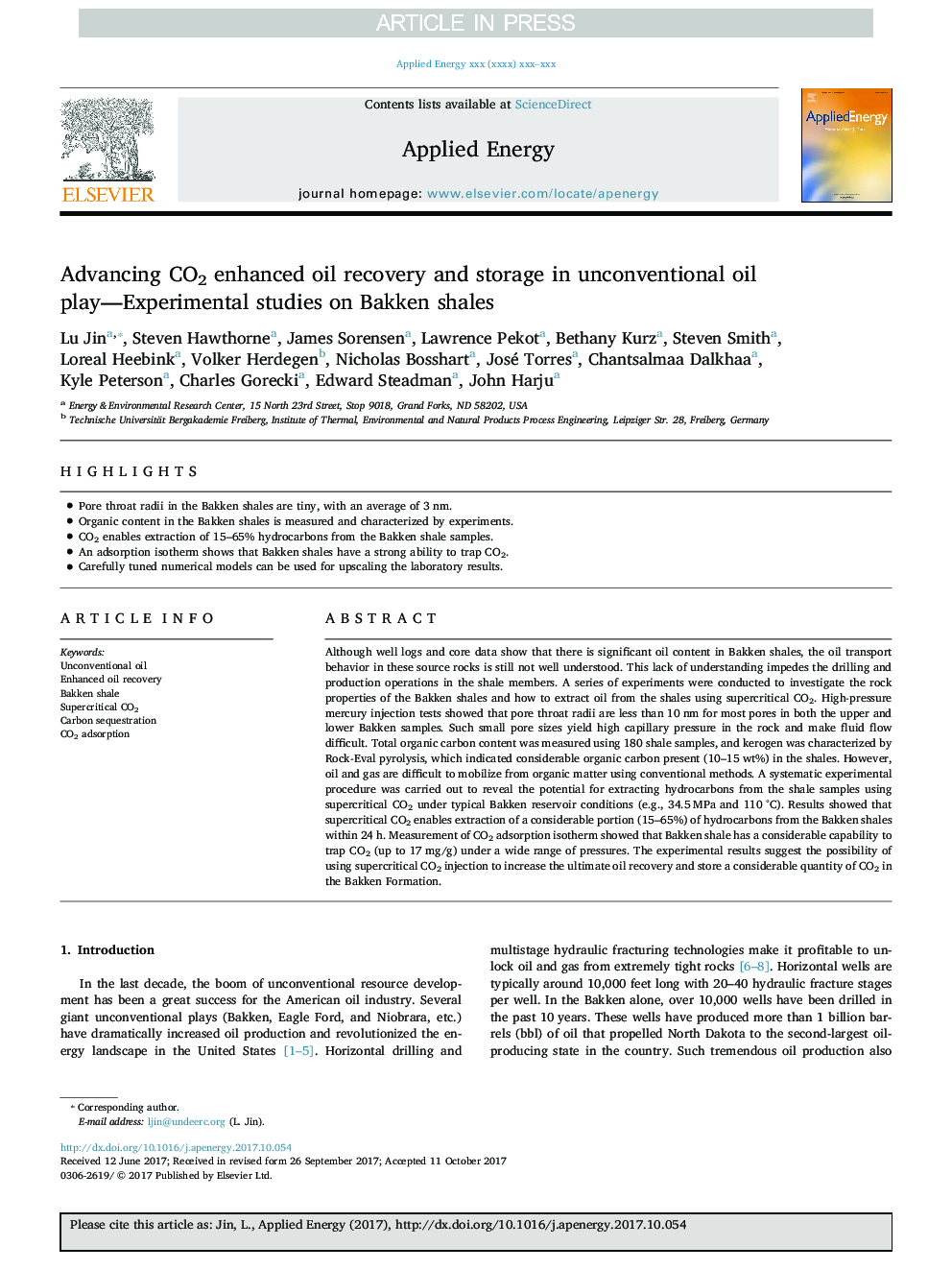| Article ID | Journal | Published Year | Pages | File Type |
|---|---|---|---|---|
| 6681645 | Applied Energy | 2017 | 13 Pages |
Abstract
Although well logs and core data show that there is significant oil content in Bakken shales, the oil transport behavior in these source rocks is still not well understood. This lack of understanding impedes the drilling and production operations in the shale members. A series of experiments were conducted to investigate the rock properties of the Bakken shales and how to extract oil from the shales using supercritical CO2. High-pressure mercury injection tests showed that pore throat radii are less than 10 nm for most pores in both the upper and lower Bakken samples. Such small pore sizes yield high capillary pressure in the rock and make fluid flow difficult. Total organic carbon content was measured using 180 shale samples, and kerogen was characterized by Rock-Eval pyrolysis, which indicated considerable organic carbon present (10-15 wt%) in the shales. However, oil and gas are difficult to mobilize from organic matter using conventional methods. A systematic experimental procedure was carried out to reveal the potential for extracting hydrocarbons from the shale samples using supercritical CO2 under typical Bakken reservoir conditions (e.g., 34.5 MPa and 110 °C). Results showed that supercritical CO2 enables extraction of a considerable portion (15-65%) of hydrocarbons from the Bakken shales within 24 h. Measurement of CO2 adsorption isotherm showed that Bakken shale has a considerable capability to trap CO2 (up to 17 mg/g) under a wide range of pressures. The experimental results suggest the possibility of using supercritical CO2 injection to increase the ultimate oil recovery and store a considerable quantity of CO2 in the Bakken Formation.
Keywords
Related Topics
Physical Sciences and Engineering
Energy
Energy Engineering and Power Technology
Authors
Lu Jin, Steven Hawthorne, James Sorensen, Lawrence Pekot, Bethany Kurz, Steven Smith, Loreal Heebink, Volker Herdegen, Nicholas Bosshart, José Torres, Chantsalmaa Dalkhaa, Kyle Peterson, Charles Gorecki, Edward Steadman, John Harju,
